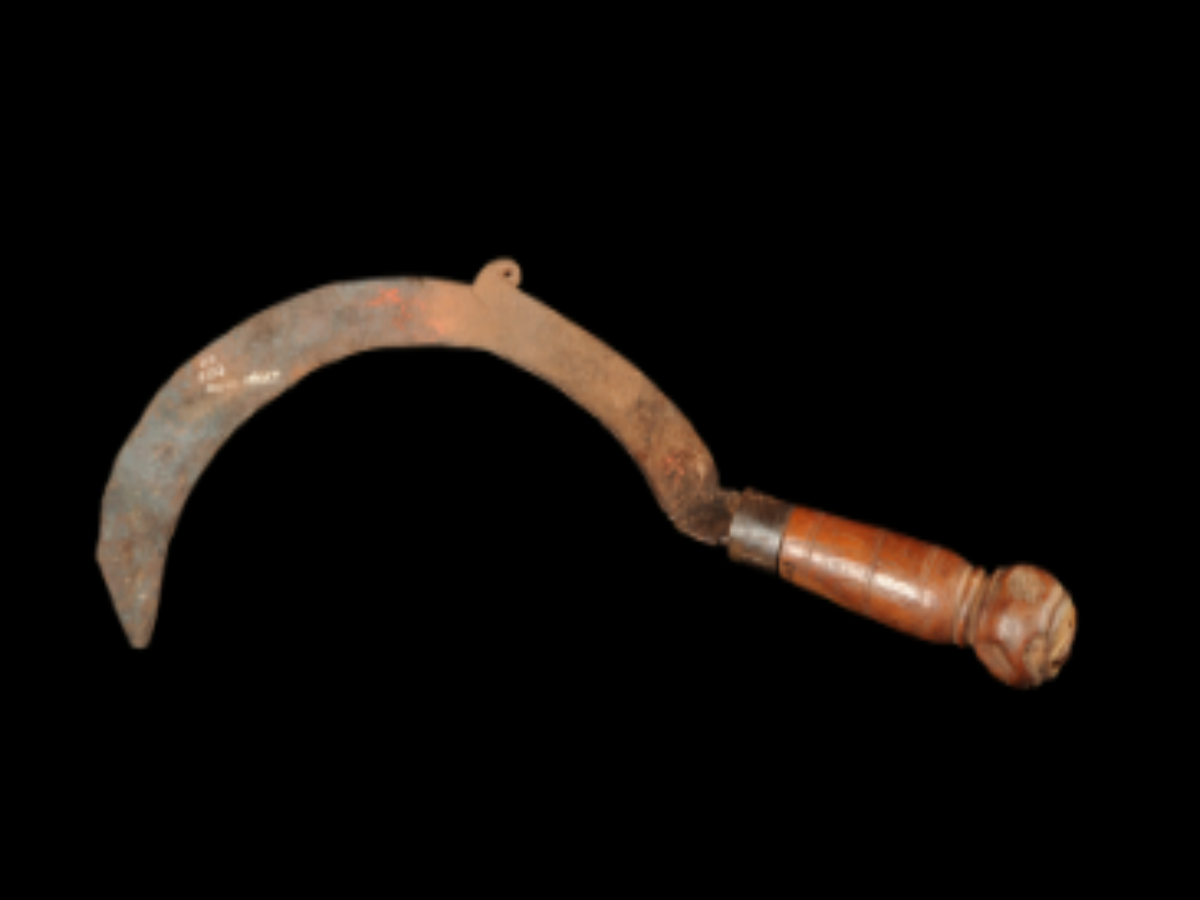State
Tribe Name
Art Type
short description
The Chenchus are an indigenous tribe largely found in the Nallamala Hills of Andhra Pradesh and Telangana. They are possibly the most nature-oriented and inherently endowed with traditional knowledge of forest-based subsistence. The iron scythe is one of the very important implements now used by the Chenchus for agriculture and foraging; a multipurpose agricultural tool tailored to fit into the natural zone. The scythe is traditional in its manufacture; its crescent-shaped iron blade is keenly tempered to harvest crops well or cut grass for clearing off vegetation in forests. The reverse side of the blade has a small ring-like portion, which primarily serves the purpose of hanging the tool. Perhaps it aids in grip and control. Now to the lower part of the blade is affixed a wooden handle fitting in a ferrule with an iron ring strengthening the joint and ensuring the handle holds good for long and vigorous use.
Thumbnail

Filter Postion
Right
Filter Background
Off
Theme
Filter Header Image

content
Image

description
The Chenchus are an indigenous tribe largely found in the Nallamala Hills of Andhra Pradesh and Telangana. They are possibly the most nature-oriented and inherently endowed with traditional knowledge of forest-based subsistence. The iron scythe is one of the very important implements now used by the Chenchus for agriculture and foraging; a multipurpose agricultural tool tailored to fit into the natural zone. The scythe is traditional in its manufacture; its crescent-shaped iron blade is keenly tempered to harvest crops well or cut grass for clearing off vegetation in forests. The reverse side of the blade has a small ring-like portion, which primarily serves the purpose of hanging the tool. Perhaps it aids in grip and control. Now to the lower part of the blade is affixed a wooden handle fitting in a ferrule with an iron ring strengthening the joint and ensuring the handle holds good for long and vigorous use.
Light in weight and easy to work, this simple tool has been designed for fast cutting with minimal manual energy expended. The scythe design is also appropriate for the hilly terrain and forests typical of the Chenchu tribe. These are common handicrafts deriving mostly from local materials, exhibiting sustainable resource use by the tribe and the craft skills passed on over generations. This scythe thus speaks of their embodiment of resistance, strength, and adaptation to coexist with the forest ecosystem.
Light in weight and easy to work, this simple tool has been designed for fast cutting with minimal manual energy expended. The scythe design is also appropriate for the hilly terrain and forests typical of the Chenchu tribe. These are common handicrafts deriving mostly from local materials, exhibiting sustainable resource use by the tribe and the craft skills passed on over generations. This scythe thus speaks of their embodiment of resistance, strength, and adaptation to coexist with the forest ecosystem.
Image Mode
landscape
promoted
On
Verified
Off
